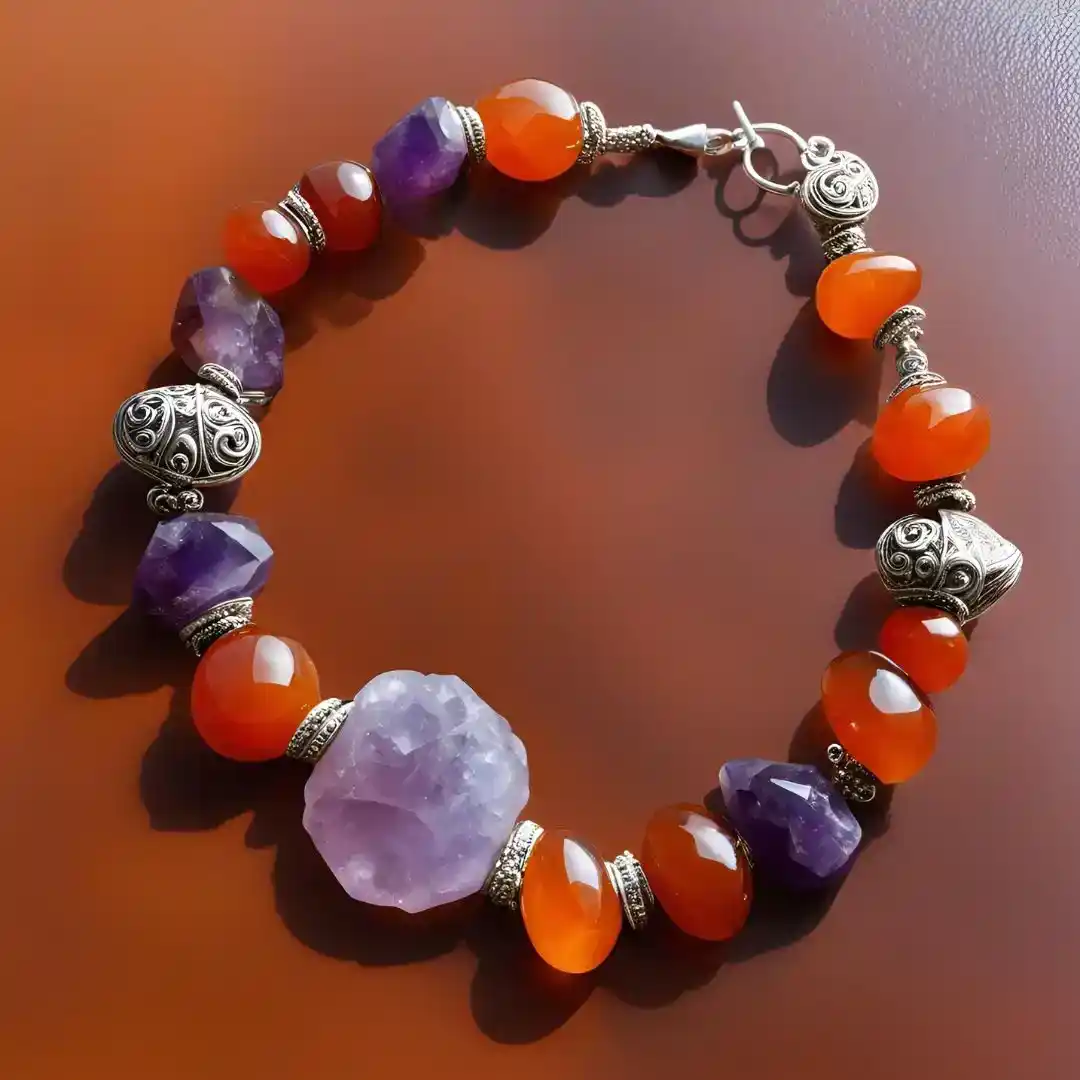In the intriguing world of gemstones, a common query arises: why cant Carnelian and Amethyst be together?
These two stones, although both a variety of quartz crystals, have distinct chemical compositions and densities, making them a unique duo.
Carnelian is known for its grounding and protective qualities, often sinking into the depths of emotional stability, while Amethyst is celebrated for its role in spiritual development and bringing peace.
When placed in the same body of water, metaphorically speaking, they behave differently, with Carnelian tending to sink and Amethyst to float, symbolizing their diverse energies.
Their hardness levels vary on the Mohs scale, presenting a practical challenge in jewelry settings, as one might easily scratch the other.
Furthermore, their colors often clash, disrupting the harmony often sought in gemstone combinations.
Wearing these stones together could lead to an imbalance in the intended effects and experience, negating the need for their individual qualities.
Also Read: The Forbidden Beauty: Who Should Not Wear Peridot
Why Shouldn’t We Join Some Crystals?
In the realm of crystal healing, it’s vital to understand why shouldn’t we join some crystals? Certain stones, despite their allure, may not harmonize well together.
For instance, Carnelian and Amethyst represent a classic case of incompatibility. Carnelian, known for its robust and hard nature, can easily scratch or damage the more fragile Amethyst.
These two crystals, when combined, might not only cause physical damage but also create a visual discord. Their colors often clash, detracting from the aesthetic value that makes crystal combinations visually appealing.
Moreover, these stones have contrasting energies that can cancel out or create an imbalance. Carnelian typically emits higher levels of energy, potentially overwhelming or depleting the lower levels of energy typically associated with Amethyst.
Additionally, their different responses to environmental factors like heat, humidity, UV light, and natural aging processes further complicate their pairing.
Carnelian may fade or decompose at a different rate than Amethyst, leading to uneven wear and tear.
Lastly, some believe in the concept of magical incompatibility, where the intrinsic properties of certain stones inherently oppose each other, disrupting the harmony sought in crystal healing and usage.
Also Read: Carnelian and Rose Quartz Together
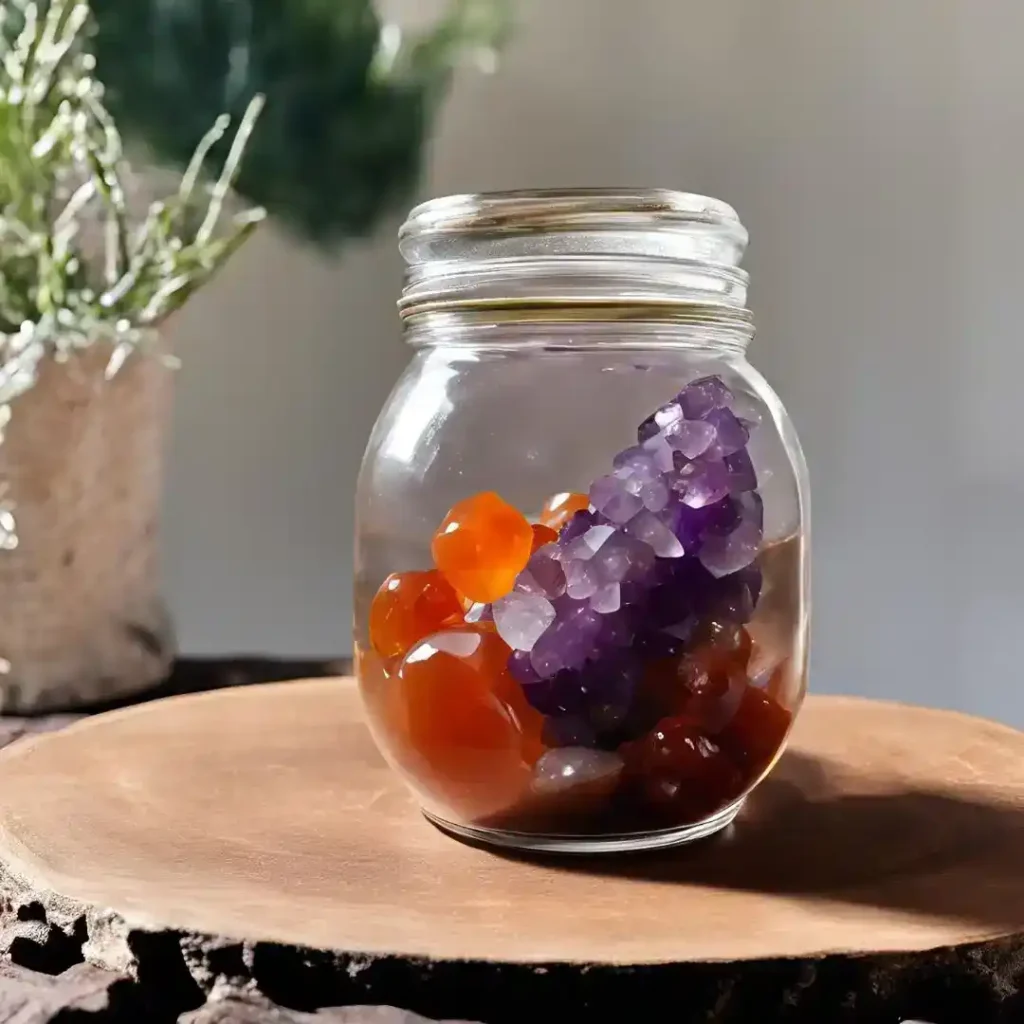
Can We Use Carnelian And Amethyst Combination?
When pondering can we use carnelian and amethyst combination it’s essential to consider their distinct characteristics.
Carnelian, a warm stone, is known for its energizing and fiery nature, representing the element of fire.
In contrast, Amethyst is an excellent stone for its calming, serene, and passive attributes, often associated with the element of water.
Although both stones create stunning jewelry individually, their energies might not complement each other when paired. However, there are exceptions.
When combined with other gemstones, such as red coral or garnet, Carnelian can create a beautiful contrast that highlights its qualities, especially when paired with a deep red gemstone like bloodstone, evoking passion and love.
Such combinations can be lovely for long-term wear or regular use. But, in the case of Carnelian and Amethyst, their divergent energies and elements suggest they are better used separately to maintain the integrity and purpose of each stone.
Also Read: Unlock The Mystical Power Of Labradorite And Moonstone Together
Why Cant Carnelian And Amethyst Be Together?
In exploring why cant Carnelian and Amethyst be together, we delve into the intricate world of crystals and specific stones.
Each stone, like Carnelian and Amethyst, possesses unique properties and energies, influencing how they interact with others, whether worn together or independently.
This blog article aims to discuss these two popular stones, often seen in jewelry and collections of healing stones and gems.
As we unravel the seven reasons behind their incompatibility, you’ll gain information to choose the best combinations for your needs and learn how to avoid potential conflict among the rocks in your collection.
This understanding is crucial for anyone looking to harmonize their personal array of gemstones.
1. Metaphysical Properties
The metaphysical properties of Carnelian and Amethyst highlight why they can’t be paired effectively.
Carnelian, a grounding stone, serves to anchor us in the present moment, enhancing vitality, motivation, and courage.
In contrast, Amethyst is an uplifting gemstone known for fostering empathy and love.
Their contrasting properties create a metaphysical tug-of-war; Carnelian strives to ground, while Amethyst aims to lift.
This dichotomy can lead to a metaphysical imbalance, making their combined use less beneficial and potentially counterproductive for their intended malicious purposes.
Also Read: 15 Best Crystal Combinations For Sunstone For Peace and Prosperity
2. Meaning
The meaning behind why Carnelian, a vibrant rock, and Amethyst, a serene mineral, can’t coexist lies in their intrinsic qualities.
Their differing hardness levels on the Mohs Scale mean that Carnelian can easily scratch Amethyst, leading to damage when they are worn as jewelry.
Their chemical compositions also react differently when heated or exposed to light, with Amethyst being more complex and Carnelian more prone to change.
Their densities vary significantly, affecting how they wear together. While their appearance may be similar, with Carnelian’s orange-brown and Amethyst’s purple to lilac colors, these shades can clash.
Additionally, the presence of inclusions in Amethyst and the potential for Carnelian to be radioactive further complicates their pairing, making them better suited for separate uses.

3. Astrological Compatibility
Exploring the Astrological compatibility of Carnelian and Amethyst, two popular stones in the crystal world, reveals a complex relationship.
Despite their individual appeal, they are not compatible when combined, mainly due to their associated zodiac signs; Carnelian is linked to Leo, symbolizing fire and bold masculine energies, while Amethyst is connected to Virgo, embodying a more reserved and analytical nature.
This difference in elemental energies tends to clash rather than complement each other. Both stones possess protective and defensive properties, yet when paired, they may metaphorically fight against each other instead of working together to grow stronger.
This lack of harmony in their astrological attributes suggests that they are better suited to be used separately to fully harness their unique energies.
4. Habits
The habits of Carnelian and Amethyst in the realm of chakra alignment offer insight into why they might not work well together.
Carnelian, associated with the root chakra, embodies grounding and security, providing a refreshing and stimulating effect.
In contrast, Amethyst is connected to the crown chakra, focusing on spirituality and connection with the higher self, and is known for its calming effect.
These different energies suggest that while both stones have their unique benefits, they may not harmonize when used simultaneously.
Carnelian’s energizing properties could overshadow Amethyst’s tranquil influence, leading to a misalignment rather than a synergistic balance.
Thus, even though they come from the same place – the earth – their products are distinctly different, shaping their individual roles in chakra and energy work.
5. Psychological Differences
The psychological differences between Carnelian and Amethyst stem from their associations with lower and higher chakras, respectively.
Carnelian energizes the lower chakras, fostering a sense of groundedness, while Amethyst influences the higher chakras, enhancing spiritual awareness.
This disparity can create an imbalance, as their energies may pull in opposite directions and potentially react negatively when placed near each other.
Carnelian’s robust presence could overpower the more subtle energy of Amethyst, leaving the latter feeling intimidated or overshadowed.
Such reactions can vary from positive to adverse, depending on the individual’s sensitivity to these stones.
Additionally, the Weight and density differences can make their combination physically and energetically uncomfortable, further complicating their joint usage in healing and meditation practices.
Also Read: Onyx Stone Benefits: The Secret To Health And Harmony
6. Practicality
From a practicality standpoint, combining Carnelian and Amethyst poses several challenges.
The vivid red and orange hues of Carnelian sharply clash with the subtle purple of Amethyst, creating an aesthetic discordance.
These rocks have different densities, making them difficult to set together in jewelry or decorative items without risking imbalance.
Carnelian, being complex and harder on the Mohs scale, can easily scratch or chip the softer stone of Amethyst.
This necessitates additional protection measures when worn or displayed together. Moreover, their care requirements differ significantly.
Carnelian is more reactive to chemicals and moisture, which means it’s more prone to corrode or change color when exposed to air pollution, high humidity, lotions, or perfumes.
This contrasts with Amethyst’s average hardness and susceptibility to damage. Cleaning them simultaneously requires safe cleaning products that won’t harm either stone.
If scratched or chipped, Carnelian’s blemishes are harder to buff out compared to the softer Amethyst, further complicating their maintenance as a combined piece.
7. Spiritual Differences
The spiritual differences between Carnelian and Amethyst play a crucial role in their incompatibility.
Carnelian is revered for its grounding and centering properties, often utilized in practices that require stability and physical presence.
Conversely, Amethyst is celebrated for enhancing spirituality and intuition, making it a cornerstone in pursuits of higher consciousness.
These different energies can inadvertently cancel each other out when used in the same space or layered together in jewelry.
The robust energy of Carnelian could potentially overpower the subtler, more reflective vibes of Amethyst, particularly in environments where calm and tranquility are desired, such as near a bed to aid sleep patterns.
Moreover, the intense colors of Carnelian, often in shades of yellows and pinks, can counteract the soothing effect that Amethyst is known for. This clash extends beyond aesthetics to their metaphysical properties.
While Amethyst is hailed as a calming stone, its negative aspects, like influencing psychic abilities and communicating with spirits, may not be suitable for everyone and could exacerbate certain conditions like headaches.
This potential to intensify rather than alleviate issues underscores the need to be cautious and open about one’s receptiveness energetically, especially for those with specific health reasons.
Choosing stones based on their spiritual properties requires careful consideration of their individual and combined effects.
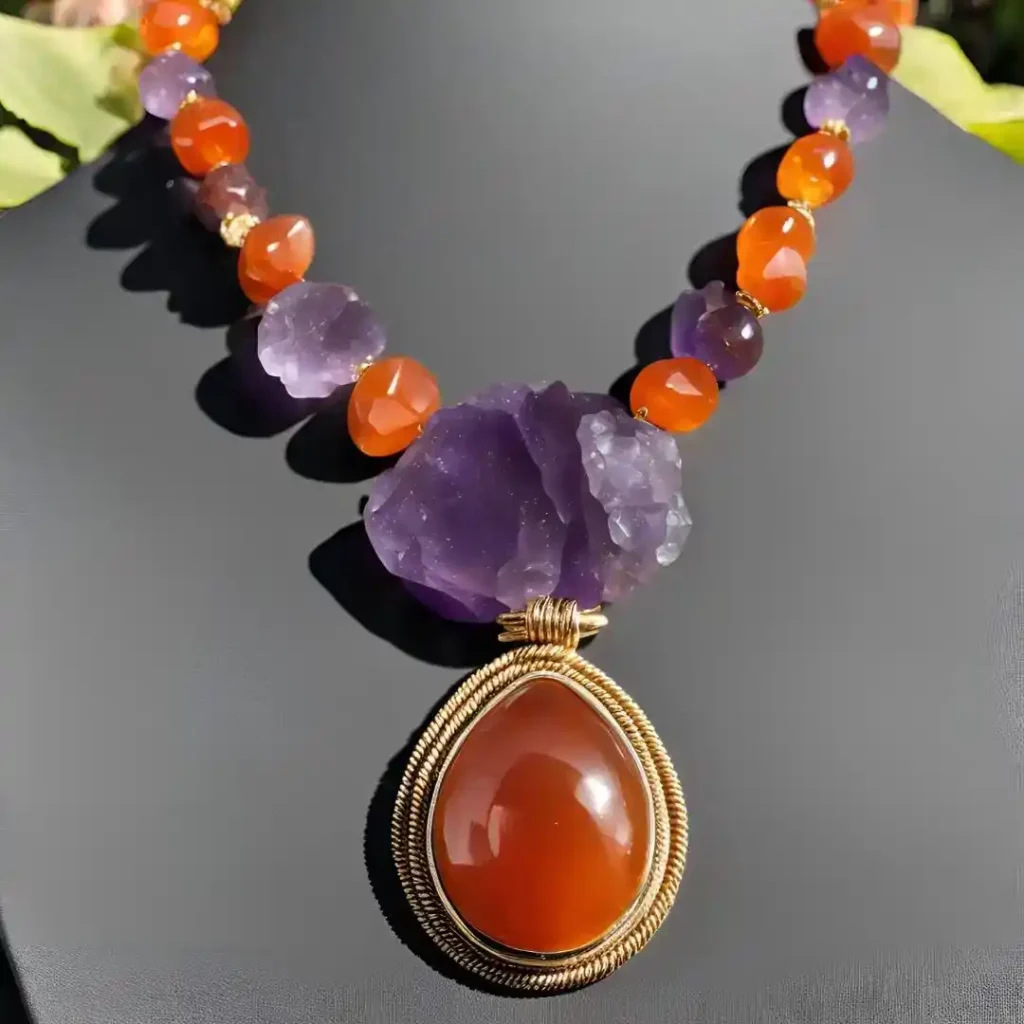
8. Overwhelming Energy
The concept of overwhelming energy is key in understanding why Carnelian and Amethyst might not be ideal partners.
While Carnelian is known for its energizing effects, providing a surge of vitality, Amethyst promotes mental clarity and calmness.
When these two are paired, the result can be an overwhelming energy flow, leading to overstimulation rather than harmony. This clash can disrupt one’s ability to focus, relax, and maintain balance in life.
Achieving an equilibrium with gemstones requires careful selection to ensure they complement and enhance each other’s energies, creating a balanced and harmonious environment.
However, the intense and contrasting energies of Carnelian and Amethyst might overshadow this balance, making their combined use less conducive to achieving desired effects.
Also Read: Defeat The Negativity: Learn How To Cleanse An Evil Eye Bracelet?
9. Healing Practices
In crystal healing practices, the incompatibility between Carnelian and Amethyst stems from their distinct purposes and energies.
Carnelian, a stone of motivation and vitality, can disrupt the tranquil and intuitive vibe of Amethyst.
This is akin to mixing discordant musical notes, upsetting the balance and harmony crucial in healing.
When choosing crystals, it’s important to pair those that work well together to enhance the healing experience and promote overall well-being, rather than combining incompatible stones like these two.
10. Chakra Balancing
In the realm of chakra balancing, understanding how gemstones influence our energy centers is key.
Carnelian primarily resonates with the Sacral Chakra, a hub for creativity, passion, and emotions.
On the other hand, Amethyst is aligned with the Third Eye and Crown Chakras, fostering intuition, spiritual connection, and higher consciousness.
When you combine these stones with such different chakra associations, there’s a risk of disrupting the balance and energy flow within the body.
Instead of a harmonious chakra system, their conflicting energies may lead to an imbalance.
When we select crystals, it’s crucial to choose those that complement and support the specific chakra associations we’re aiming to balance.
In my experience, pairing Carnelian with a stone like Orange Calcite, which also energizes the Sacral Chakra, or combining Amethyst with Lapis Lazuli for the Third Eye and Crown Chakras, can enhance the balance and flow of energy.
This careful selection ensures that each chakra is nurtured without interference from incompatible energies.
11. Meditation Practices
In meditation practices, using gemstones as tools for setting intentions and enhancing the experience is common.
However, Carnelian and Amethyst may bring conflicting energies into this space.
Carnelian, with its energizing properties, can interfere with Amethyst’s calming energy, leading to confusion or restlessness instead of the desired inner peace.
A clear intention and the ability to maintain focus during meditation are essential for a successful practice, and this requires compatible energies.
When both stones are used together, their contrasting vibrations may disrupt the serene environment we strive to create, hindering the meditation process.
Also Read: Maintain Spiritual Balance: How To Cleanse Your Red String Bracelet?
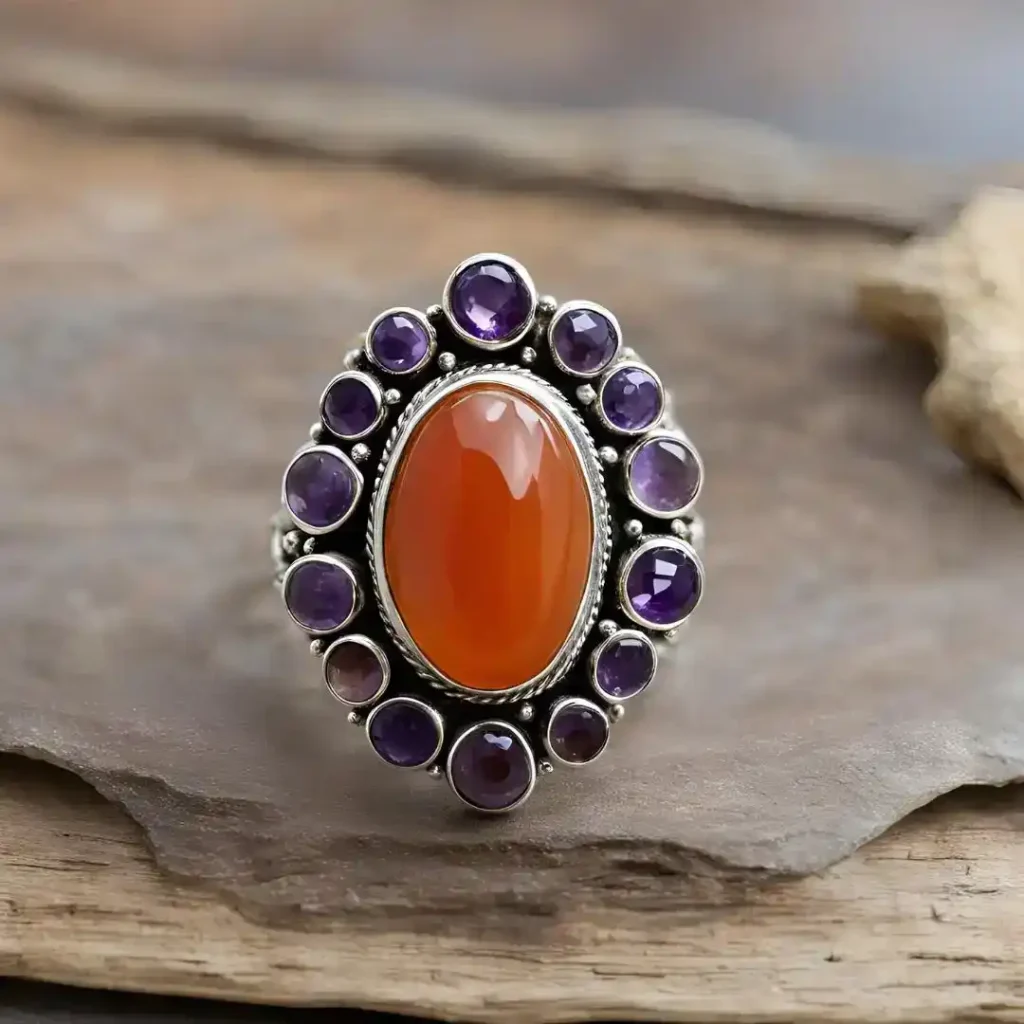
12. Personal Preferences And Sensitivity
When it comes to sensitivity to the energies of gemstones like Carnelian and Amethyst, personal preferences and individual energetic makeup play a crucial role.
Some may find a discomfort or dissonance when these stones are used together, as their energies might not harmoniously resonate with everyone.
It’s important to explore the world of gemstones with intuition, finding those that support your well-being in a unique way.
The key is to trust your own sense and choose stones that align with your personal energy field, as this can vastly differ from one individual to another.
13. Bonus Reason: The Importance Of Intention And Purpose
The intention and purpose behind using gemstones are pivotal.
When the compatibility of their properties and energies doesn’t align with your intentions, it can lead to conflicting intentions, which might hinder the effectiveness and potential benefits of each stone.
Carnelian, fostering creativity and motivation, may not synchronize well with Amethyst’s focus on relaxation and spiritual growth.
It’s essential to make informed decisions when you select gemstones to ensure they match your goals, whether it’s for personal development, healing, or spiritual exploration.
Also Read: Why Did My Rose Quartz Turn White: Discover Why It Loses Color!
Can I Use Carnelian With Other Crystals?
Yes, you can use Carnelian in combination with other crystals, but it’s important to consider their energies.
While Carnelian is an energetic stone known for boosting motivation, it may not work well with Amethyst, as they are opposites and can disrupt the energy balance.
In a workspace, for example, combining Carnelian with Citrine can amplify focus and drive.
However, using it with Amethyst might bring negative consequences due to their conflicting vibrations.
There are no strict basic rules for combining stones, but it’s generally better to keep Carnelian separated from those with significantly different energies for the best benefits.
Can I Use Amethyst With Other Crystals?
Amethyst, being a mighty stone, can certainly be used with other crystals, but it should be done sparingly and in moderation to avoid overloading your energy field.
When you combine Amethyst with clear quartz, you enhance clarity and spiritual connection. Pairing it with protective stones like black tourmaline or hematite can be grounding.
However, avoid using Amethyst with high-energy stones like citrine or rose quartz in a necklace, as their vibrant energies might cancel out Amethyst’s calming influence.
Additionally, pairing it with green stones such as jade, emeralds, or peridots might not be ideal due to their contrasting energies.
For a harmonious blend, consider stones with a purple hue, like iolite or labradorite, which complement Amethyst’s energy.
Also Read: How To Cleanse And Charge Pyrite For Maximum Benefits
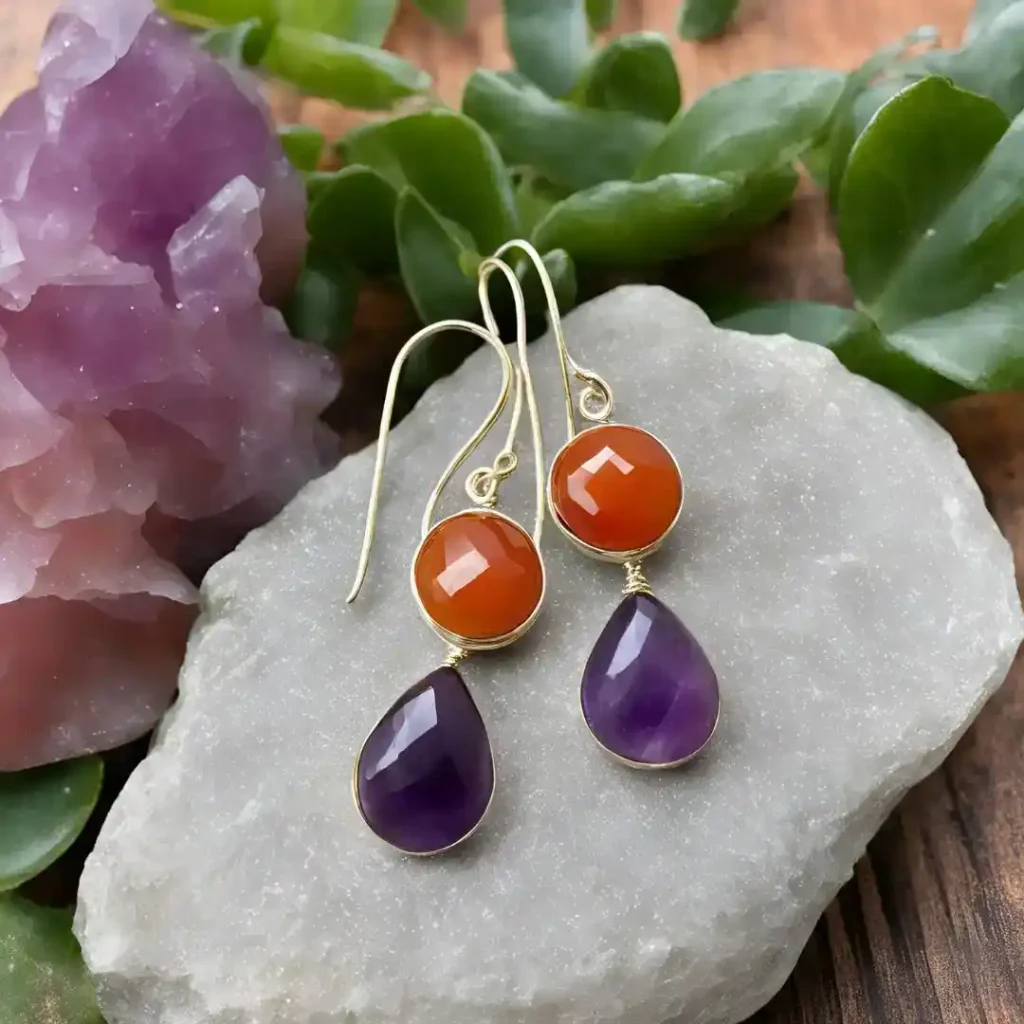
FAQs About Why Cant Carnelian And Amethyst Be Together
1. Can Carnelian And Amethyst Go Together?
When Amethyst, known to diminish sadness and irritability, is paired with Carnelian, the combination can address emotional instability and fertility issues. This mix is great for people who suffer from fluctuating moods. However, when these two crystals are placed together, their energies might conflict, leading to increased instability rather than balance.
2. What Is Carnelian And Amethyst Together Meaning?
Carnelian, a warm and stabilizing crystal, calms anger and banishes emotional negativity, while Amethyst alleviates sadness and soothes irritability. Their combination is fantastic for couples looking to boost fertility. Together, they create a supportive environment for emotional and relational healing.
3. What Crystals Should Not Be Worn With Carnelian?
Carnelian is a crystal that boosts energy, but when paired with Amethyst, which calms you down, they might cancel each other out, sending a confusing signal to your chakra system. It’s essential to avoid such conflicting combinations for maintaining clear and focused energy flow.
4. What Not To Pair With Amethyst?
The combination of certain crystals, like Clear Quartz and Amethyst, should not be kept together in a room as their energies are too powerful and can clash, creating an overwhelming and unbalanced environment.
5. What Is Bad For Amethyst?
Amethyst can lose its beautiful color if it faces prolonged exposure to intense light. It’s also vulnerable to being damaged by hydrofluoric acid, ammonium fluoride, and alkaline solutions. So, it’s best to keep your amethyst away from these harmful substances and environments.
6. Why Can’t You Wear Amethyst Every Day?
While Amethyst scores well on the Mohs scale of hardness, it’s still not recommended to be worn every day without care. This relatively hard gemstone needs protection to prevent its color from fading and its surface from getting scratched.
7. What Body Part Does Amethyst Rule?
Amethyst primarily affects the third-eye chakra and crown chakra, which are connected to the spiritual realm, mind, and intuition, respectively. By wearing this gemstone, you can benefit your Chakras and enhance your mental and spiritual well-being.
8. What Crystal Combination With Amethyst?
Combining Amethyst with Clear Quartz, Rose Quartz, or Citrine can create powerful synergies to enhance positive energies. Such pairings can support your spiritual journey, promote emotional healing, and attract positive energy effectively.
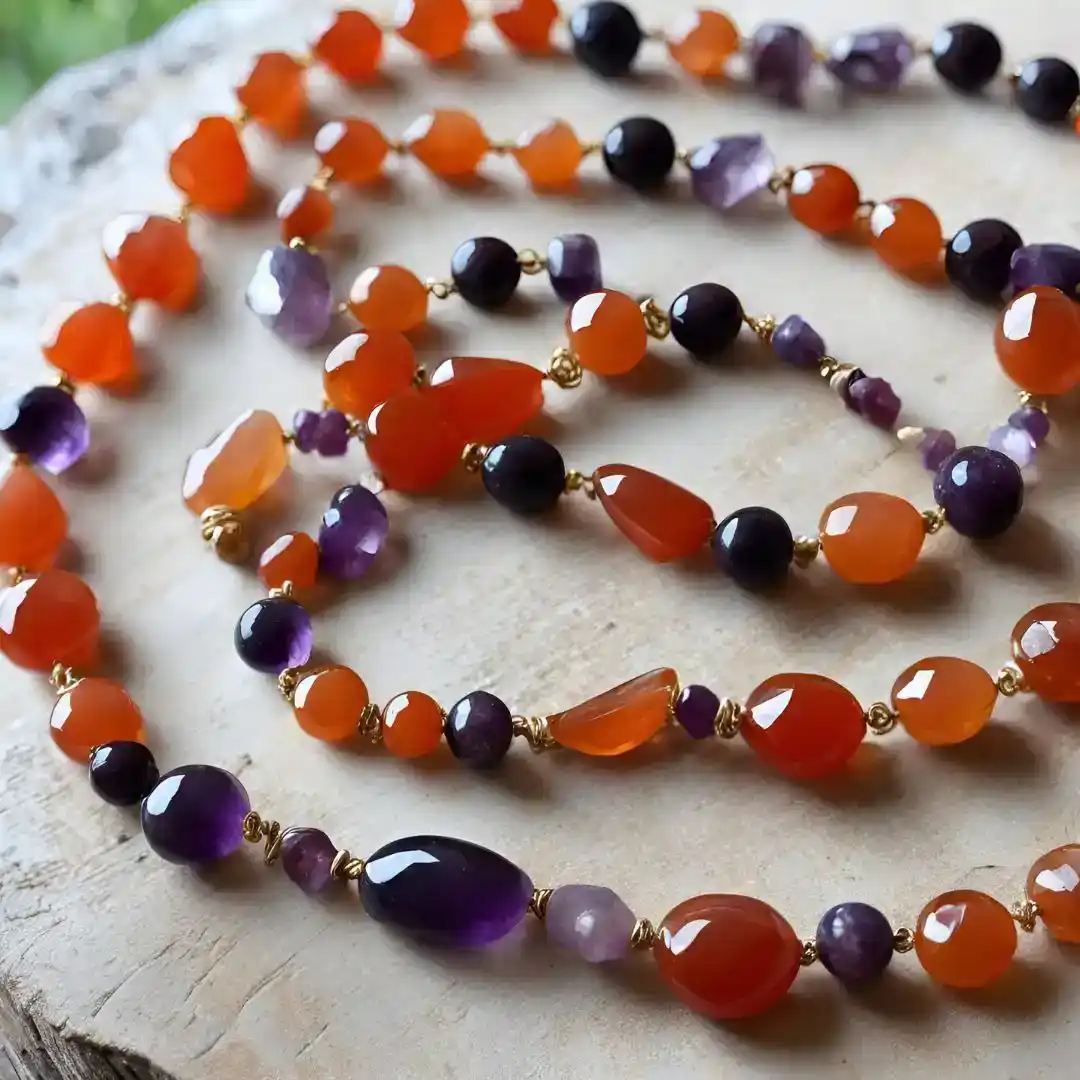
Final Thoughts
The query “why cant carnelian and amethyst be together” stems from the fundamental differences in their properties and uses.
Carnelian, a grounding stone, and Amethyst, a spiritual stone, possess energies that often conflict.
Wearing both can create an imbalance in one’s energy field, leading to potential adverse effects on health and well-being.
While some people believe in the aesthetic appeal of combining different colors and rocks, in this case, the clash of their qualities is not just visually unappealing but also energetically strong.
Therefore, it’s advised to wear these stones separately rather than combined at the same time to avoid such imbalances and ensure each stone can effectively contribute its unique benefits.
